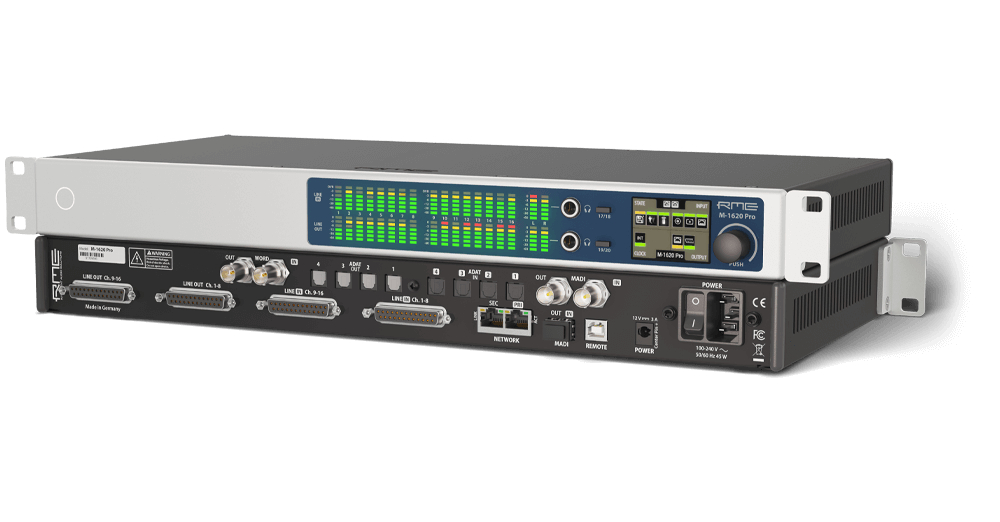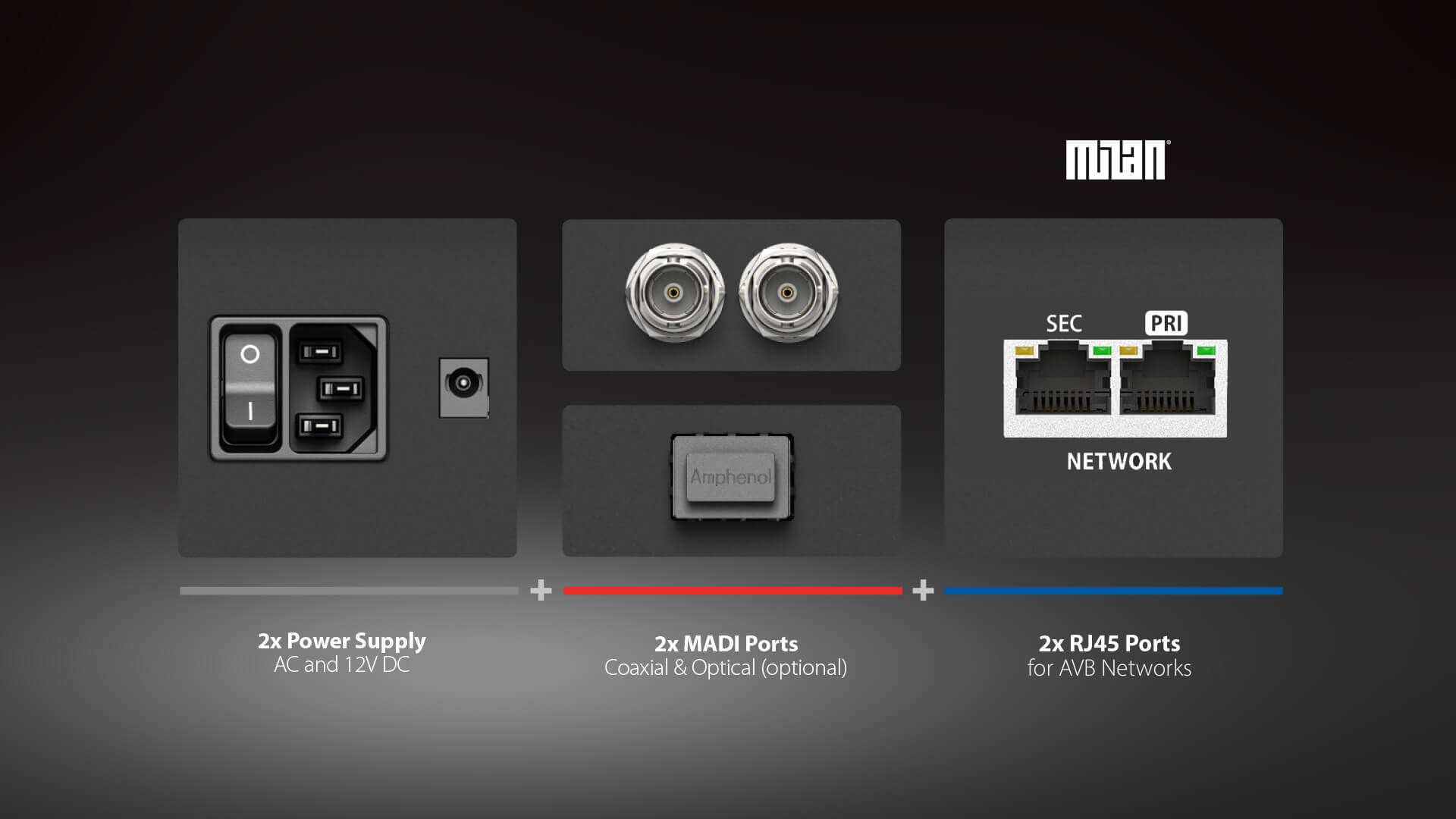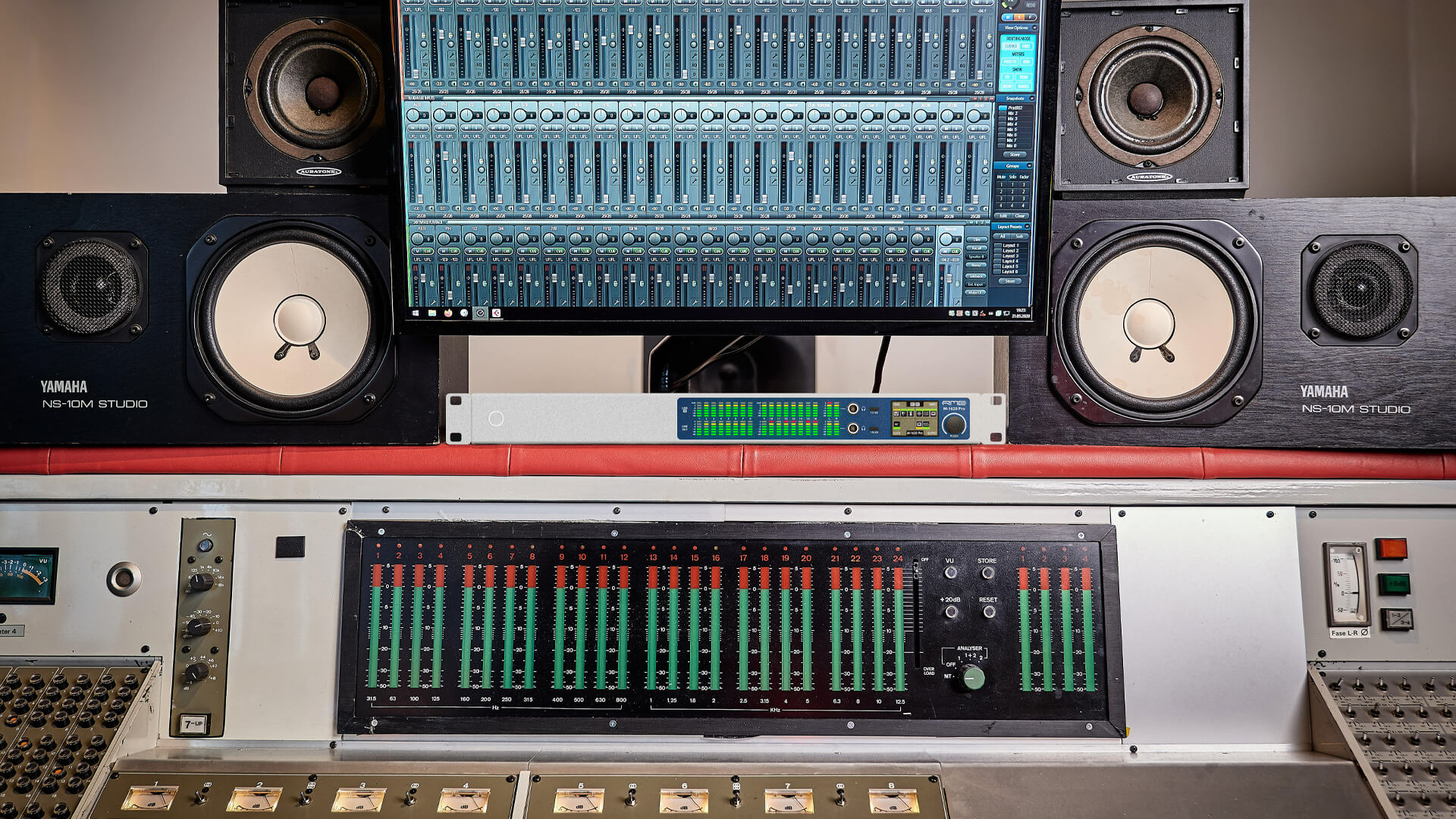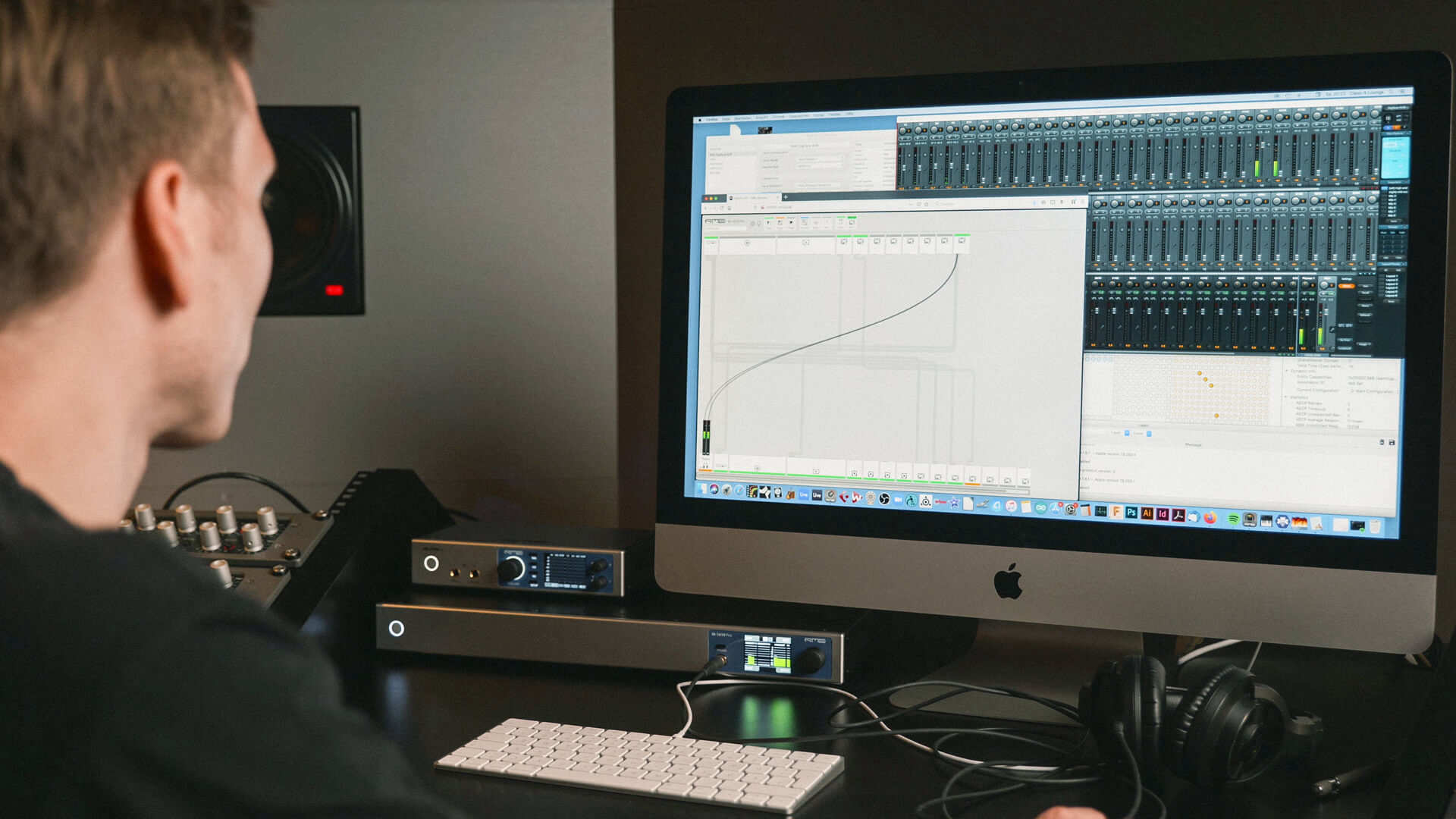M-1620 Pro
16 channel A/D, 20 channel D/A converter with ADAT, Milan®, MADI


Connectivity and Features
Simplicity at first glance - Flexibility and reliability beyond
RME prioritizes reliability by equipping the M-1620 Pro with built-in redundancy. This includes dual network and dual MADI connections, along with a monitored DC input in addition to the internal AC power supply. A unique system clearly signals when an issue arises, ensuring seamless operation. With full stand-alone capability, users can adjust device settings directly on the unit for quick modifications or to recall entire user-defined presets.
The Milan-certified model transmits and receives up to 128 channels at 48 kHz (96 @ 96 kHz, 64 @ 192 kHz) with precise, fixed latency across a deterministic network. It reveals its status and configurable options to controllers using the open IEEE 1722.1 (ATDECC) standard.

Multiple layers of redundancy make the M-1620 Pro Series a perfect companion for any kind of live sound application.
Add Analog and AVB I/O to any existing MADI devices
The M-1620 Pro allows manual configuration of the converter’s aliasing filters for optimal impulse and frequency response. Jitter on digital input signals is effectively reduced with SteadyClock FS. Separate Word Clock BNC and coaxial MADI connectors, with optional optical MADI via an SFP module, allow the device to be easily integrated into existing infrastructure.

Perfect for recording engineers using a variety of analog effects and instruments.
Plug & play - rapid user interaction
Control all device states directly from the front panel for convenient, direct access to all features. RME AVB devices can also be fully remote controlled via a web-interface on any network link (including wirelessly over Wi-Fi), allowing for the rapid creation of gain groups, phantom power switching, and routing of signals to headphones for monitoring. The integrated routing matrix allows for quick routing of any analog inputs straight to the headphone output, as well as all digital signals and AVB streams. As such, problem-solving of signals, clocking, connectivity or other issues is both simple and straight-forward!

Direct access to all features via the web-interface on any network
More Outstanding Features
About MADI - Multi Channel Digital Audio Protocol
MADI is a protocol that has evolved alongside RME to be the most widely accepted multi channel digital audio protocol on the market. RME’s MADI-based systems deliver incredible reliability, particularly in applications where failure is not an option.
SteadyClock FS - Reference class Digital Clocking
Excellent performance in all clock modes and High Quality Analog Conversion to hear your mix as it is, with lowest jitter and highest jitter immunity.
Accessories
Optical MADI SFP Module (optional available)
This module extends compatible RME devices with an optical SFP transceiver. Up to 64 audio channels can then be sent to and received from other MADI devices. THE RME SFP module is available in a Multi-Mode and in a Single-Mode version, it can be inserted and removed while the RME MADI device is powered on. It is not necessary to power down the device.
Specs
M-1620 Pro
Line In 1-16:
- Resolution: 24 bit
- Input level switchable per channel +24 dBu, +19 dBu, +13 dBu @ 0 dBFS
- Inputs AC coupled, fully symmetrical signal path (servo-balanced)
- Input Impedance 9.5 kΩ
- Signal to Noise ratio (SNR) @ +24 dBu, 44.1 kHz: 117.0 dB RMS unweighted, 120.7 dBA
- Signal to Noise ratio (SNR) @ +19 dBu: 116.3 dB RMS unweighted, 119.9 dBA
- Signal to Noise ratio (SNR) @ +13 dBu: 114.7 dB RMS unweighted, 118.3 dBA
- Frequency response @ 44.1 kHz, -0.1 dB: 5 Hz – 20.5 kHz
- THD @ -1 dBFS: < -111 dB, < 0.00029%
- THD+N @ -1 dBFS: < -108 dB, < 0.00039 %
- Channel separation: > 110 dB
- Resolution: 24 bit
- Output level switchable per channel +24 dBu, +19 dBu, +13 dBu @ 0 dBFS
- Outputs DC coupled, fully symmetrical signal path ("truly balanced")
- Output impedance: 200 Ohm balanced, 100 Ohm unbalanced
- Signal to Noise Ratio (SNR) @ 13 dBu: 119.2 dB RMS unweighted
- Signal to Noise Ratio (SNR) @ 19 dBu: 119.7 dB RMS unweighted
- Signal to Noise Ratio (SNR) @ 24 dBu: 119.9 dB RMS unweighted
- Frequency response @ 44.1 kHz, -0.1 dB: 0 Hz – 20.3 kHz (Sharp Filter, default)
- Frequency response @ 96 kHz, -0.1 dB: 0 Hz – 30 kHz (Slow Filter, default)
- Frequency response @ 96 kHz, -0.1 dB: 0 Hz – 44.1 kHz (Sharp Filter)
- Frequency response @ 192 kHz, -0.1 dB: 0 Hz – 60.5 kHz (Slow Filter, default)
- Frequency response @ 192 kHz, -0.1 dB: 0 Hz – 85 kHz (Sharp Filter)
- THD @ 19 dBu: < -120 dB, < 0.0001 %
- THD+N @ 19 dBu: < -113 dB, < 0.0002 %
- Channel separation: > 110 dB
- Resolution: 24 Bit
- Output: 6.3 mm TRS stereo (unbalanced) or mono (balanced) jack
- Maximum output level +4 dBu / +19 dBu (+10 dBu / +25 dBu in balanced mode)
- Output level switchable separately for each TRS connector
- Signal to Noise Ratio (SNR) @ 19 dBu: > 109 dB RMS unweighted, > 111 dB(A)
- Frequency response @ 44.1 kHz, -0.1 dB: 0 Hz – 20.0 kHz (Sharp Filter, default)
- Frequency response @ 96 kHz, -0.1 dB: 0 Hz – 20.0 kHz (Slow Filter, default)
- Frequency response @ 96 kHz, -0.1 dB: 0 Hz – 44.3 kHz (Sharp Filter)
- Frequency response @ 192 kHz, -0.1 dB: 0 Hz – 43 kHz (Slow Filter, default)
- Frequency response @ 192 kHz, -0.1 dB: 0 Hz – 85 kHz (Sharp Filter)
- THD+N @ 4 dBu, 32 Ohms load: < -100 dB, < 0.001 %
- THD+N @ 19 dBu, 100 Ohms load: < -100 dB, < 0.001 %